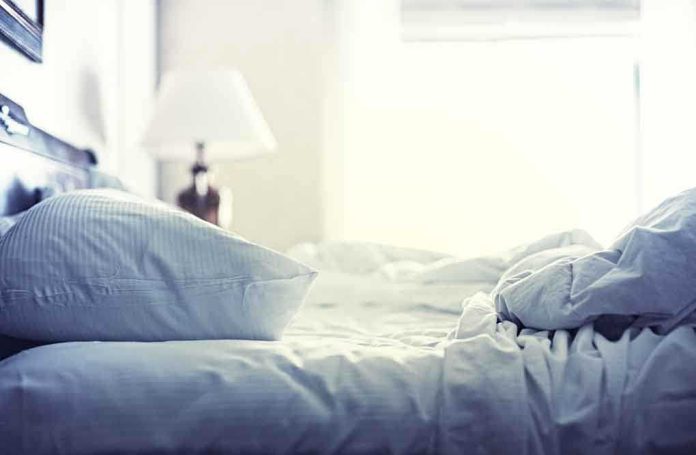
Forget counting sheep—Tai Chi, yoga, and jogging might just be your new bedtime allies against insomnia.
At a Glance
- Exercise rivals medication for insomnia treatment.
- Tai Chi and yoga significantly boost sleep quality.
- Jogging reduces insomnia severity effectively.
- Non-pharmacological treatments offer fewer side effects.
Exercise: The New Sleep Aid
As the world tosses and turns in search of a good night’s sleep, a new study highlights an unexpected hero in the battle against insomnia: exercise. Not just any exercise, but the gentle flow of Tai Chi, the meditative stretch of yoga, and the rhythmic pounding of a jog. Recent research published in BMJ Evidence Based Medicine sheds light on these exercise types, showcasing them as formidable rivals to traditional insomnia treatments.
The study pooled data from 22 randomized clinical trials, involving a diverse group of 1,348 participants. It compared 13 treatment approaches, seven of which were exercise-based, ranging from 4 to 26 weeks in duration. The results? Tai Chi, yoga, and jogging outperformed other interventions, with Tai Chi notably boosting sleep quality and efficiency over a sustained period.
The Science Behind Sleep and Sweat
What makes these exercises so effective? For starters, they are accessible and come with minimal side effects—unlike some sleep medications that leave users feeling groggy. The movements in Tai Chi and yoga promote relaxation, reducing anxiety and calming the nervous system, which can significantly improve sleep quality. Meanwhile, jogging gets the heart pumping and helps regulate cortisol and melatonin, hormones crucial for sleep.
In the studies, yoga increased total sleep time by nearly 2 hours and improved sleep efficiency by 15%. Tai Chi participants reported over 50 minutes of additional sleep and a significant reduction in the time spent awake after sleep onset. Joggers, on the other hand, experienced a nearly 10-point drop in insomnia severity scores.
A Shift in Treatment Mindset
Traditionally, insomnia has been tackled with pills and cognitive behavioral therapy (CBT-I). However, the accessibility of exercise as an intervention is a game-changer. No longer do patients need to rely solely on medications with potential side effects or struggle to access CBT-I due to a shortage of trained therapists. Exercise offers a low-cost, side-effect-free alternative that can be integrated easily into daily routines.
This shift is gaining traction among healthcare providers and public health organizations, who are starting to embrace exercise as a primary treatment for insomnia. The study authors emphasize that further research is needed to determine the best exercise types for specific insomnia symptoms, but the current evidence is promising.
The Road Ahead
The implications of adopting exercise as a primary treatment for insomnia are profound. In the short term, it means fewer prescriptions and a greater emphasis on holistic health. Long-term, it could lead to improved overall sleep health, reduced healthcare costs, and a decrease in insomnia-related conditions like depression and cardiovascular disease.
While the study acknowledges some limitations, such as small sample sizes and a lack of standardized exercise protocols, the results are compelling enough to warrant a closer look by clinical guideline committees. As more research is conducted, the hope is that exercise will be recognized not just as an adjunctive treatment, but as a cornerstone in managing insomnia.
Sources:
Systematic Review on Physical Activity
Randomized Controlled Trials on Resistance Exercise














